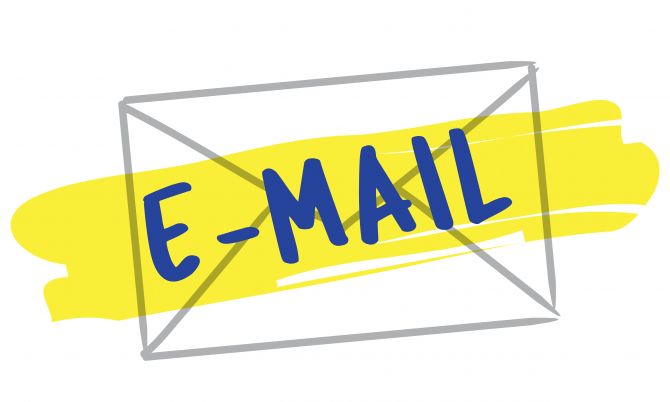Santosh Singh talks about Online Marketing
Top Digital Marketing Strategies for 2024
Apr 29, 2024
Ever feel like you're constantly playing catch-up while the rules in digital marketing keep on changing? New trends seem to emerge faster than ever...
May 11, 2023
by Santosh Singh

Email marketing has been a tried and tested marketing tactic for many years. Despite the rise of social media and other digital marketing channels, email remains an effective way to reach and engage with customers. However, with the sheer volume of emails people receive daily, it can be challenging to cut through the noise and get your message noticed. In this article, we will explore some tips and best practices for navigating the complexities of email marketing and maximising the impact of your campaigns.
Before you begin any email marketing campaign, defining your goals is essential. What do you hope to achieve through email marketing? Are you looking to increase brand awareness, drive traffic to your website, generate leads, or boost sales? Once you have a clear understanding of your goals, you can tailor your email campaigns accordingly. For example, if your goal is to increase sales, you may want to focus on promoting your products and offering exclusive discounts to your email subscribers.
Your email marketing campaigns' success hinges on your email list's quality. Therefore, building a list of engaged subscribers who have opted in to receive your emails is important. There are several ways to build your list, including:
Once you have built your email list, it's crucial to segment your subscribers based on their interests, behaviour, and demographics. By segmenting your list, you can send targeted emails that are more likely to resonate with your subscribers. For example, if you sell clothing, you may want to segment your list based on gender, age, and purchasing behaviour. This will allow you to send targeted emails showcasing products relevant to each segment.
The subject line is the first thing your subscribers will see when they receive your email. Therefore, it's important to craft subject lines that are attention-grabbing and compelling. A good subject line should be short and to the point and clearly communicate your email's value. Avoid using all caps, excessive punctuation, or spammy language in your subject lines, as these can trigger spam filters and decrease your email deliverability.
The content of your emails should be valuable and relevant to your subscribers. Avoid sending promotional emails purely focused on selling your products or services. Instead, focus on creating content that provides value to your subscribers. This could include educational resources, helpful tips and tricks, or exclusive content only available to your email subscribers.
With more than 50% of emails being opened on mobile devices, optimising your emails for mobile is important. This means using a mobile-responsive design that adapts to different screen sizes and keeping your emails short and to the point. Also, avoid using large images or graphics that may take a long time to load on mobile devices, as this can cause subscribers to lose interest.
Finally, it's essential to test and measure your email campaigns to determine what works and what doesn't. A/B testing can be a powerful tool for optimising your campaigns. For example, try testing different subject lines, calls to action, or email designs to see what resonates best with your subscribers. Additionally, use analytics tools to track metrics like open rates, click-through rates, and conversion rates, and use this data to refine your email marketing strategy over time.
In addition to creating compelling content and optimising your emails for mobile, following best practices for email deliverability is essential. This includes:
Email marketing is not just about sending promotional emails to your subscribers. It's also about nurturing your subscribers to build long-term relationships with them over time. This could include sending educational content, offering exclusive discounts or promotions, or asking for feedback or input from your subscribers. By nurturing your subscribers, you can build trust and loyalty, which can lead to increased engagement and sales over time.
Finally, it's crucial to continuously improve your email marketing strategy over time. This could include testing new tactics, monitoring your analytics, and seeking feedback from your subscribers. By constantly iterating and improving your strategy, you can ensure that your email campaigns remain adequate and relevant in a rapidly changing digital landscape.
Email marketing is an essential component of any digital marketing strategy. By leveraging the power of email, businesses can reach their customers in a personalised and targeted way, driving engagement and, ultimately, sales.
According to recent statistics, email marketing continues to be a highly effective tool for businesses. There are estimated to be over 4.3 billion email users worldwide, with an expected increase to 4.6 billion users by 2025. In addition, email marketing has an impressive return on investment (ROI), with an average ROI of $42 for every $1 spent.
Furthermore, email marketing offers a range of benefits for businesses, including increased website traffic, improved customer loyalty, and higher conversion rates. It's also a great way to build brand awareness and communicate essential updates or news to your audience.
As we look to the future, it's clear that email marketing will continue to play a critical role in digital marketing. With the rise of mobile devices and advances in email automation and personalisation, businesses have more opportunities than ever before to connect with their customers through email.


Santosh Singh talks about Online Marketing
Apr 29, 2024
Ever feel like you're constantly playing catch-up while the rules in digital marketing keep on changing? New trends seem to emerge faster than ever...


Santosh Singh talks about Online Marketing
Apr 25, 2024
Do you ever feel like there just aren't enough hours in the day? Between juggling social media campaigns, crafting compelling content, and keeping...